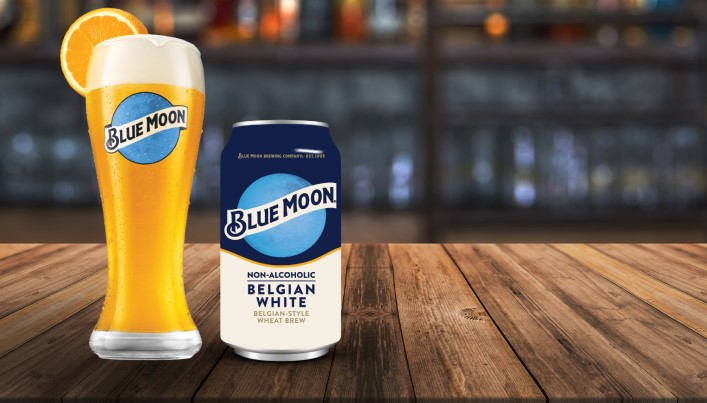
Blue Moon is a big name in the beer world. It’s been one of the most well-known wheat beers since its inception in 1995. It’s such a household name that it’s the kind of beer that probably wouldn’t see much of a dip in sales even if it never advertised again. But that’s not necessarily the case for its new non-alcoholic Belgian-white ale. And since drinkers might not be completely aware of this alcohol-free offering, the brand launched one of the weirdest and best dry January promotions ever.
If you’re unaware of dry January, it’s a time when many people attempt to “dry out” from the recent holiday season. There’s a good chance that due to all the social gatherings and parties, many drinkers had a few too many beers, glasses of champagne, and boozy cocktails. While it’s a great idea for many drinkers health-wise and as a way to start a new year on the right foot, like many resolutions, about halfway through the month, beer starts to look more and more appealing. Luckily, the folks at Blue Moon figured out a way to help you fight your urge to sip alcohol-filled frosty brews.

Dry-Back January
They’re calling it “Dry-Back January,” and the promotion began on January 12. You might not know why that date is important and why the promotion wasn’t simply running all month long. Well, according to experts, January 12 is the day when most people give up on their dry January aspirations. It’s even referred to as “Quitter’s Day” because of the high percentage of drinkers who decide to crack open a beer and say that they gave it the ‘ol college try but just couldn’t last a whole month.
Dry-Back January works like this: for every six-pack of Blue Moon Non-Alcoholic purchased from Quitter’s Day until January 31st, Blue Moon will give you a rebate that can be used to purchase a six-pack of any beer in the Blue Moon Portfolio. That means that for all the NA beer you enjoy this month, you can sip on the same amount of alcohol-filled brews when you get back to your drinking ways in February or beyond.

How to get your free beer
Well, technically, it’s not free beer per se. It’s more like buy one get one free. The goal is to get drinkers to try its NA beer so maybe they’ll want to grab it in the future. To get your free sixers, you need to submit your receipts at BlueMoonNonAlcoholic.com to receive a rebate. But that’s not all. Since the folks at Blue Moon understand that their beer tastes better with a slice of orange, they’ll even pay for the orange. Yes, you read that right.



